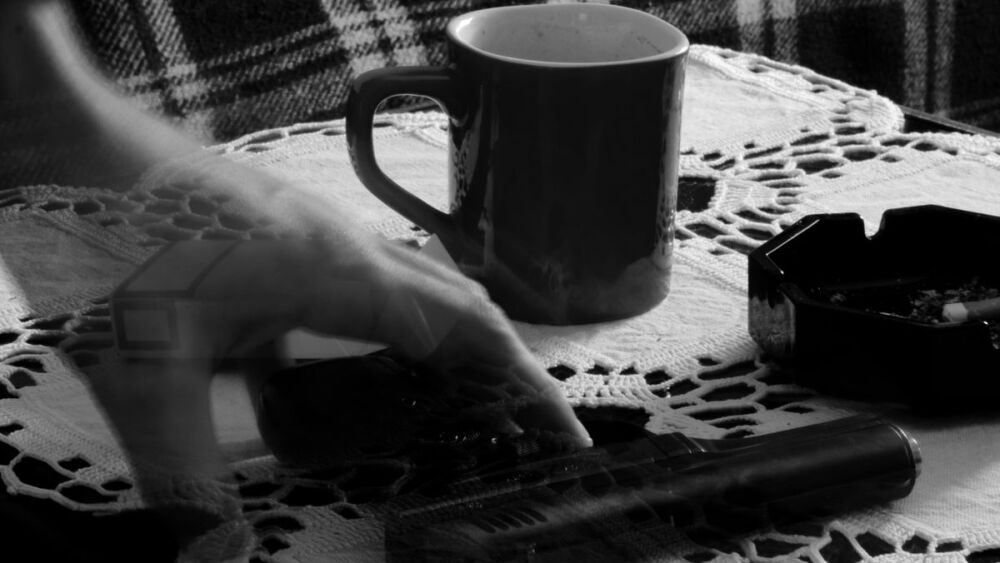On March 24, 2021, the Supreme Court heard oral argument in Caniglia v. Strom, a case that went from a spat about a coffee mug to newsworthy ramifications for police, the sanctity of our homes, gun rights, the Constitution, and the safety of elderly folks, suicidal citizens and treed cats – or so the headlines said.
The facts
Edward Caniglia, 68, and his wife of 27 years, Kim, got in a disagreement about a coffee mug. During the dispute, Edward retrieved a gun, placed it on the table and said, “Why don’t you just shoot me and get me out of my misery?” When Kim threatened to call the police, Edward went for a drive. Concerned her husband might use the gun to hurt or kill himself, Kim hid it.
Edward returned, the argument resumed and Kim spent the night at a hotel. The next morning when Edward didn’t answer her phone call, Kim became worried. She called 911 and asked for a “well call,” advising dispatch she thought her husband might harm himself. Officers met Kim at the hotel and called Edward, who said he’d talk to them.
The officers escorted Kim home and had her wait in the car. Edward confirmed his wife’s version of events but denied he was suicidal. He contended he’d said “just shoot me” because he was tired of arguing. But he became “very upset” when his wife approached.
Officers remained concerned Edward still posed a danger to himself. They called an ambulance. Edward went with rescue personnel for a psychiatric evaluation. Guided by Kim, the officers seized two guns from the home.
Edward had no criminal history and no record of violence, misuse of guns, or self-harm. He contended he only went for the evaluation because the police told him they would not confiscate his guns and they told his wife he’d consented to their confiscation, which he hadn’t.
Edward was evaluated and discharged. According to hospital records, this was partly based on the staff’s “confiden[ce] that the guns had been confiscated by police.”
A few days later Kim went to the police to get the guns and was refused. A month later Edward tried unsuccessfully. An attorney’s demand also failed. The guns were returned four months after their seizure when the attorney sued.
On the way to the Supreme Court
Caniglia sued the city and the individual officers in federal district court under 42 U.S.C. § 1983 alleging his Second, Fourth and 14th Amendment rights were violated. The District Court granted Caniglia summary judgment on his 14th Amendment due process claim finding the city lacked a process for returning the guns. The city didn’t appeal and paid nominal damages.
The District Court ruled for the city and officers on the Second and Fourth Amendment claims and the First Circuit affirmed. Caniglia (hereinafter Petitioner) appealed to the Supreme Court on only his Fourth Amendment claim. The city and officers (hereinafter Respondents) argued their warrantless entry into the house and seizure of the guns did not violate the Fourth Amendment because it was justified under “the community caretaking doctrine.”
The Supreme Court recognized a community caretaking exception to a warrant requirement for vehicles in Cady v. Dombrowski (1973) to address impounded cars and highway safety. Community caretaking police actions are divorced from investigating or acquiring evidence of crimes. The Court had not recognized the exception for homes.
This case ensnared notions dear to various groups:
- Our nation’s sanctifying of homes and guns.
- Concern that police would use the exception as a pretext to enter homes and “discover” criminal evidence in “plain view.”
- The danger of warrantless entries into homes for both police and occupants.
- A recognition that communities expect the police to protect and serve and not just do enforcement activity.
The case provoked amicus curiae briefs from groups as diverse as gun advocates, the ACLU, the National Association of Criminal Defense Lawyers, mental health advocates, nine states, counties, constitutional and public policy experts, and privacy advocates.
(NOTE: Respondents did not assert a consent or exigent circumstances exception. They conceded the circumstances did not meet the immediacy requirement of exigent circumstances. I found no discussion of consent.)
The Court’s conundrum
At oral argument, the justices seemed at their wits’ ends. They sounded sympathetic to the idea that police are called to perform caretaking functions unrelated to criminal activity, but they seemed frustrated with the sticky wicket of determining:
- What facts justify a warrantless entry into a home for caretaking?
- What standard of certainty should be applied to appropriately compelling facts?
Justice Roberts asked whether a meowing, treed cat in a fenced yard with a locked gate and absent occupants justified police – in response to a concerned neighbor’s call – to climb the fence and rescue the cat. He also inquired about a crying, apparently unattended, baby.
Justice Kavanaugh lamented over the number of people who daily die of gun suicides and how the police can be critical in preventing some of those, as well as elderly people who live alone falling and concerned neighbors calling police to check on them.
Searching for a legal standard, Justice Alito pressed Petitioner on the quantum of evidence needed for a permissible, warrantless, nonconsensual search of a suicidal (but not criminal) suspect’s home. He added the treed cat example showed the need to define some limits on caretaking.
Justice Gorsuch asked about the test set forth in the DOJ’s amicus brief – “reasonably necessary to protect health or safety.” Petitioner argued that such a broad standard could be used to “cannibalize” the Fourth Amendment. The DOJ attorney expanded the standard, adding “a current ongoing crisis for which it is reasonable to act now” to prevent “serious physical harm.”
Justice Breyer expressed concern about weakening exigent circumstances. “[I]f we move to a whole new thing like caretaker, I don’t know what we do.”
Respondents’ attorney equated police with emergency care personnel, saying the risk here sufficed as a “potential” harm where “the need to respond could be immediate.” He posited the legal standard should be “possible cause.” (A bit of an odd ask.)
Justice Sotomayor noted that regardless of the quantum of suspicion, the officers ignored the absence of exigency. She asked, “Tell me, what’s the limiting principles?”
What’s a cop to do?
I’ll be reporting on the Court’s decision, expected by June this year. I have no idea whether it will clarify this issue for police or make it muddier.
In the meantime, you or your brass reach out to your local prosecutor and ask for some guidelines on when and how to enter a home for a caretaking purpose, including whether your state has any statutes about it.
Be proactive, think about this ahead of time. Don’t rely on qualified immunity as protection from civil liability. If you have time and can, get clear consent from someone authorized to give it for warrantless entry into any home. If you’re going to confiscate stuff, have a legally valid process in place for its return or forfeiture.













